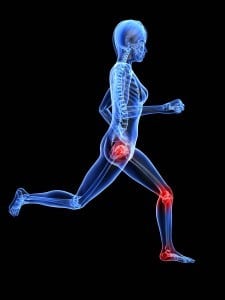Joint Replacement
What is a joint?
In anatomy, a joint refers to the physical location where two or more bones connect to each other. Joints comprise several different parts or types of connective tissues such as tendons, ligaments and cartilage. Joints allow us to move our bones in specific directions. Joints are surrounded by a fibrous capsule that prevents the bones from moving too much. The inner surface of this capsule produces a fluid that lubricates the joint. This is called the synovial fluid.


When might you need joint replacement surgery?
A surgeon may recommend joint replacement surgery (“arthroplasty”) if your joint is damaged, you are in pain and you have trouble moving. In arthroplasty, part or all of the damaged joint is removed and replaced with a manufactured implant (artificial hip or knee). This is intended to help relieve pain and to restore fuller mobility. Doctors consider “appropriateness of care” when making such a recommendation. Appropriate care is based on whether the expected health benefit of the surgery, including life expectancy, exceeds the negative consequences by a significantly wide margin. For example, the criteria that doctors use for knee replacement surgery appropriateness include your age, pain level, anatomic involvement, knee extension, and KL Grade. The KL Grade—short for Kellgren-Lawrence Grading Scale—indicates severity of osteoarthritis based on a radiograph, from “0” (nothing wrong) to “4” (bone-on-bone). There are risks involved with any surgical procedure, so it is important to carefully weigh the expected risks and benefits of joint replacement surgery with your doctor or surgeon before making a decision.
Are there different types of joint replacement?
Yes. Joint replacement surgeries can be of the hip, knee, shoulder, ankle, elbow and fingers. Joint replacement surgery involves removing a damaged joint and replacing it with a new joint. This can help restore movement and relieve pain. Sometimes the surgeon may choose to remove part of the damaged joint (partial joint replacement) while at other times he or she may remove it entirely (total joint replacement). This depends on the extent of the damage. Surgery for a completely artificial knee is referred to as total knee replacement (TKR), for example.
What causes joint pain? Does joint pain always require surgery?
Joints can be damaged in various ways. Damage can be caused by trauma (e.g., car accident or bad fall), osteoarthritis or other rheumatological condition such as rheumatoid arthritis. General wear and tear associated with aging may also be a reason for joint damage. Not all joint pain requires surgery. Doctors may perform an x-ray to get a closer look at the joint that is causing pain. In addition, they may perform a procedure called an “arthroscopy.” During arthroscopy, a tube with a camera is inserted into the joint to view it more clearly and assess the extent of the joint damage.
Doctors may prescribe exercise, physical therapy, medication or corticosteroid injection to improve or manage joint pain. Depending on a patient’s response to these, the next step may be to recommend surgery depending on the clinical assessment of the painful joint.





